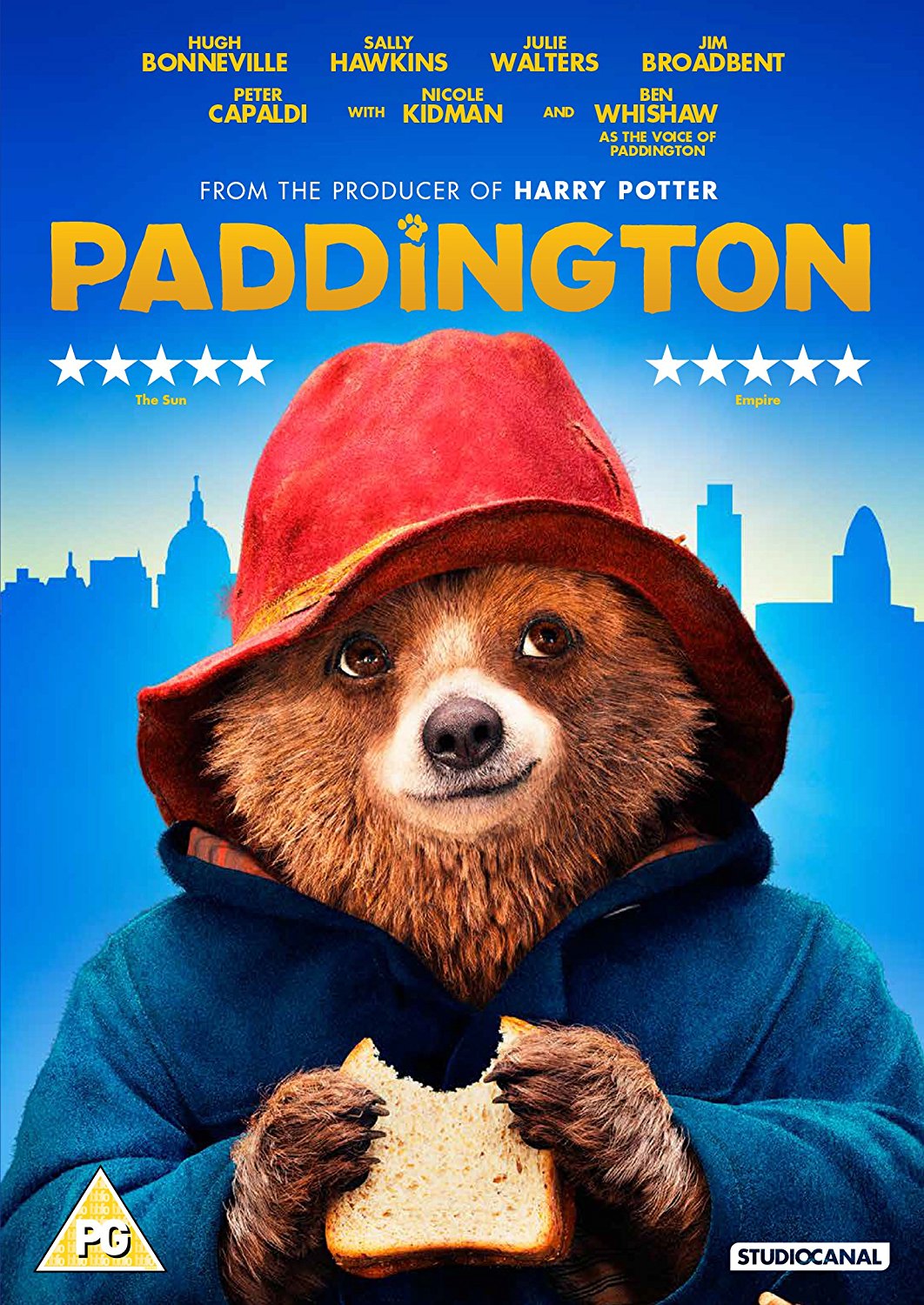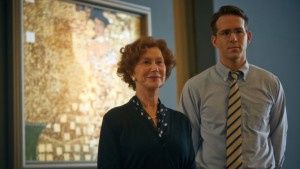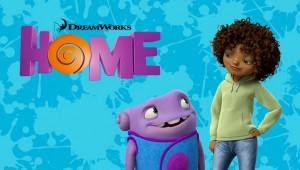Paddington
Posted on April 15, 2015 at 5:55 pm
B +| Lowest Recommended Age: | Kindergarten - 3rd Grade |
| MPAA Rating: | Rated PG for mild action and rude humor |
| Profanity: | Some schoolyard language |
| Alcohol/ Drugs: | Drinking and drunkenness |
| Violence/ Scariness: | Peril and mostly comic violence, offscreen death |
| Diversity Issues: | A metaphoric theme of the movie |
| Date Released to Theaters: | January 16, 2015 |

Michael Bond’s gentle, charming stories about the Peruvian bear named for a London train station has been brought to the screen with almost as much gentle charm as the stories, and certainly far more than the slapsticky trailer suggested.
A generation ago, a British explorer named Montgomery Clyde (Tim Downie) was rescued by a rare breed of bears in Peru. He lived with two of them, Pastuzo (Michael Gambon) and Lucy (Imelda Staunton), teaching them some English, including the 107 ways to describe rain that Londoners like to use, and introducing them to the pleasures of orange marmalade. When he said goodbye, he assured them of a warm welcome if they ever came to London bestowed his red hat on Pastuzo.
Pastuzo and Lucy raised their nephew (Ben Wishaw), teaching him all they had learned from Clyde, developing their own artisanal marmalade recipe, and enchanting him with tales about the far-off land called London where their friend would be happy to welcome him. When Pastuzo is killed, Lucy moves to a home for retired bears and the young cub stows away on a freighter bound for London, wearing the red hat and carrying a suitcase filled with jars of marmalade.
At Paddington Station, he meets the Brown family. Risk-averse Mr. Brown (“Downton Abbey’s” Hugh Bonneville) does not want to have anything to do with him, but warm-hearted and spontaneous Mrs. Brown (Sally Hawkins) invites him home, naming him for the train station where they met. The Browns have two children, Judy (Madeleine Harris), a teenage daughter who never takes out her earbuds, and Jonathan (Samuel Joslin), a budding inventor.
As soon as they get home, the extra-prudent Mr. Brown calls his insurance company to extend the protection of his homeowner’s policy, but it is not fast enough. Paddington’s first encounter with a bathroom ends in catastrophe. Mr. Brown is horrified. But Mrs. Brown is sympathetic, and Judy and Jonathan are delighted. A little chaos can be a good thing. And learning to enjoy the differences we encounter in others is a very, very good thing.
As the Browns warm to Paddington, their neighbor, Mr. Curry (“Doctor Who’s” Peter Capaldi) has only one pleasure — having something new to complain about. And there is a more sinister villain as well. A taxidermist at the natural history museum named Millicent (Nicole Kidman, who also co-produced the film) wants Paddington so she can kill him, stuff him, and put him on display. “Is he endangered?” asks one of the museum staff. Millicent narrows her eyes, channeling Cruella De Vil. “He is now.”
The advertising for the film regrettably focuses on the slapstick and gross-out jokes (Paddington thinks Mr. Brown’s toothbrush is for cleaning out his ears). Thankfully, as a whole the film is true to the gentle humor and sweetness of the books. Wishow perfectly captures Paddington’s innocent friendliness and Bonneville and Hawkins are just right as the couple who only need a slight adjustment to reconnect with each other and their children. A brief flashback showing why Mr. Brown became so worried about safety will be appreciated by the children and parents in the audience, and even Millicent’s motives are revealed to be less about evil than about her feelings of hurt and loss. Paddington remains a most welcome visitor, and I hope we see more of him.
Parents should know that this film includes a sad (offscreen) death and some peril, including a taxidermist who wants to kill and stuff Paddington. Characters use some mild language and there is comic mayhem and peril and some bodily function humor. A woman flirts with a man to get him to do what she wants. A man dresses as a woman for disguise and another man finds him attractive. A character gets a security guard drunk so that other characters can break into a building.
Family discussion: Why did Mr. Brown change his views on taking risks when his daughter was born? Why doesn’t Mr. Curry like Paddington? Can you do a “hard stare” and when would you use it?
If you like this, try: the Paddington books and the “Curious George” books and movies — and taste some marmalade!





